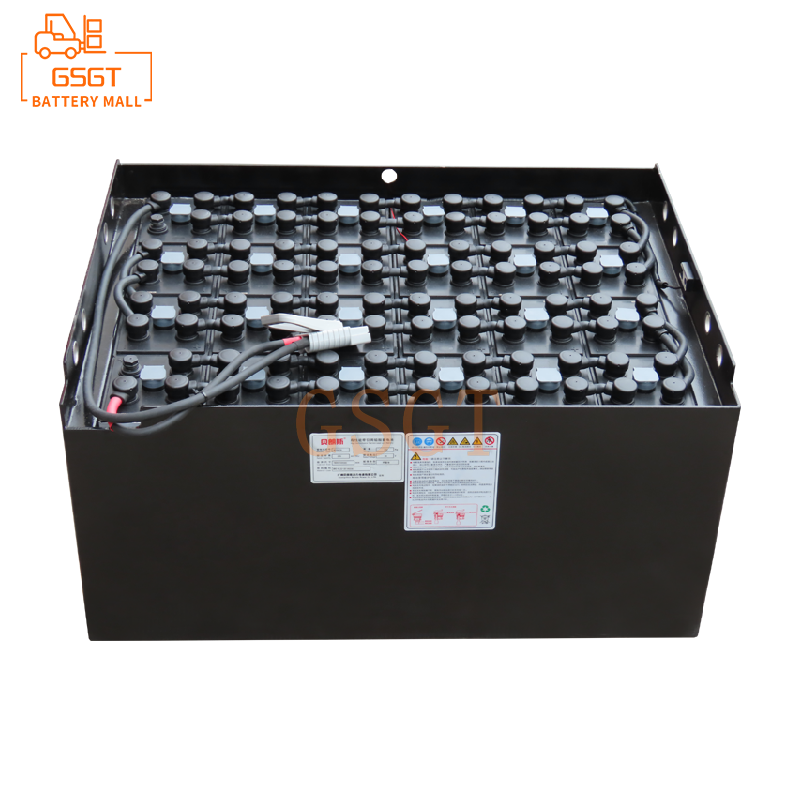Time:2025-07-16 15:09:29
Browse:608
In the fields of logistics warehousing and industrial handling, forklifts, as key equipment, the choice of their power sources directly affects operational efficiency and cost control. With years of technological accumulation, lead-acid batteries remain the mainstream choice for forklift power systems to this day. This article will analyze the core advantages of lead-acid batteries in forklifts from multiple dimensions such as cost, safety, and maintenance.
The initial investment cost has been reduced by more than 30%
For small and medium-sized logistics enterprises, the cost of equipment procurement is an important decision-making factor. The raw material price of lead-acid batteries is only one fifth of that of lithium batteries. The production process is highly mature, which makes the procurement cost of a single group of forklift batteries 30% to 50% lower than that of lithium batteries of the same capacity.
This cost advantage is more pronounced in enterprises with larger fleet scales. Data from a certain e-commerce warehousing center shows that all 20 of its forklifts are equipped with lead-acid batteries, saving nearly 300,000 yuan in equipment investment compared to the lithium battery solution in the initial stage. This fund can be directly used for other operational links.
Safety and stability in extreme environments
The working environment of forklifts is complex, and battery safety is of vital importance. The chemical properties of lead-acid batteries determine their higher safety factor: the electrolyte uses dilute sulfuric acid solution, and even if the casing is damaged, there will be no violent combustion phenomenon like that of lithium batteries. In a 2024 safety report of a certain logistics industry, the safety accident rate of lead-acid battery forklifts was only 17% of that of lithium battery forklifts.
Lead-acid batteries perform particularly stably in high-temperature warehouses (above 35℃) or low-temperature cold chain environments (below -15℃). Actual tests in a certain frozen food warehouse show that at -20 ℃, the capacity retention rate of lead-acid batteries can still reach 80%, while that of lithium batteries drops to around 55%.
The maintenance system is mature and spare parts are easily accessible
The maintenance technology of lead-acid batteries has formed a standardized system, and most forklift maintenance personnel can complete daily maintenance after simple training. The core maintenance work only requires regular replenishment of distilled water and inspection of electrode connections, and the maintenance cost is about one third of that of lithium batteries.
In terms of parts supply, lead-acid battery repair points are basically available in all county-level and above regions across the country. The response time for replacing parts such as plates and electrolyte is usually within 24 hours. Statistics from a certain manufacturing enterprise show that the average annual downtime for maintenance of its lead-acid battery forklifts is only 48 hours, which is much lower than the 120 hours of lithium battery forklifts.
Q&A session: Common Questions about Lead-acid Batteries
Question: Is the service life of lead-acid batteries shorter than that of lithium batteries?
Answer: Under proper usage conditions, the cycle life of lead-acid batteries can reach 1,500 times. Calculated based on the average daily charge and discharge cycle of a forklift, it can meet the usage requirements for 3 to 4 years. Although its cycle life is lower than that of lithium batteries, considering the difference in procurement costs, its overall cost performance is actually higher. The comparative data of a certain logistics company shows that the total investment (including replacement) of lead-acid batteries within a three-year cycle is 22% lower than that of lithium batteries.
Question: Does the charging time of lead-acid batteries being too long affect operations?
Answer: The standard charging time for lead-acid batteries is 8 to 10 hours, but through equalization charging technology, it can be rapidly charged to 80% capacity in 6 hours. For enterprises operating in multiple shifts, the "backup battery + battery replacement" model can be adopted. A certain warehousing center has achieved 24-hour continuous operation of forklifts through this approach, increasing the average daily operation time of a single vehicle to 16 hours.
Question: Does the weight of lead-acid batteries have an impact on forklift operation?
Answer: Although lead-acid batteries are relatively heavy, they can precisely serve as counterweights for forklifts, enhancing stability when loading heavy objects. When handling objects weighing over 5 tons, the risk of rollover for lead-acid battery forklifts is 23% lower than that for lithium battery forklifts. This is also an important reason why heavy-duty forklifts prefer lead-acid batteries.
Conclusion: The optimal solution for comprehensive effectiveness
The comprehensive advantages of lead-acid batteries in terms of cost control, safety guarantee and maintenance convenience make them still a rational choice for forklift power. Especially for enterprises with moderate work intensity and sensitive operating costs, lead-acid batteries can significantly reduce the total life cycle cost while ensuring efficiency. With the advancement of recycling technology, the environmental performance of lead-acid batteries has been continuously improving. Currently, the material recovery rate has reached 98%, forming a closed-loop circulation system. When it comes to the selection of forklift power, lead-acid batteries remain the preferred option that combines both economy and reliability.

$1060

$3050

$5710

$1690

MESSAGE
Professional And Efficient
Security
Affordable Price
Professional Services